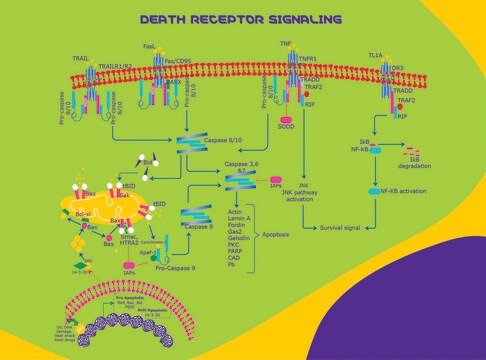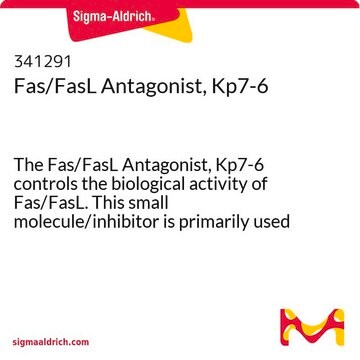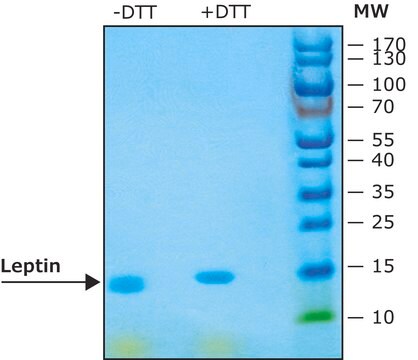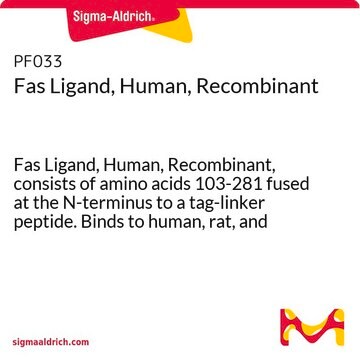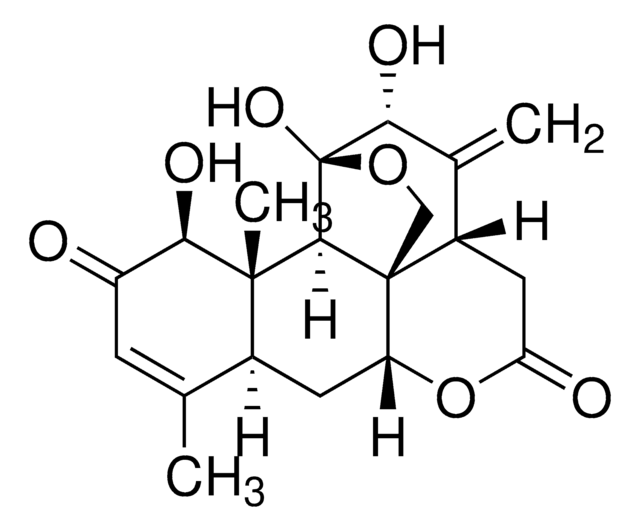F0552
Fas Ligand from mouse
>95% (SDS-PAGE), recombinant, expressed in mouse NSO cells, lyophilized powder
About This Item
Recommended Products
recombinant
expressed in mouse NSO cells
Quality Level
Assay
>95% (SDS-PAGE)
form
lyophilized powder
mol wt
monomer calculated mol wt ~18 kDa
28-32 kDa by SDS-PAGE
impurities
endotoxin, tested
UniProt accession no.
storage temp.
−20°C
Gene Information
mouse ... Fasl(14103)
General description
Application
- the induction of apoptosis in PC12 cells and
- the induction of migration in BV-2 murine microglial cells.
Biochem/physiol Actions
Other Notes
Physical form
Analysis Note
Storage Class Code
10 - Combustible liquids
WGK
WGK 3
Flash Point(F)
Not applicable
Flash Point(C)
Not applicable
Regulatory Listings
Regulatory Listings are mainly provided for chemical products. Only limited information can be provided here for non-chemical products. No entry means none of the components are listed. It is the user’s obligation to ensure the safe and legal use of the product.
JAN Code
F0552-BULK:
F0552-VAR:
F0552-50UG-PW:
F0552-50UG:
Choose from one of the most recent versions:
Already Own This Product?
Find documentation for the products that you have recently purchased in the Document Library.
Our team of scientists has experience in all areas of research including Life Science, Material Science, Chemical Synthesis, Chromatography, Analytical and many others.
Contact Technical Service